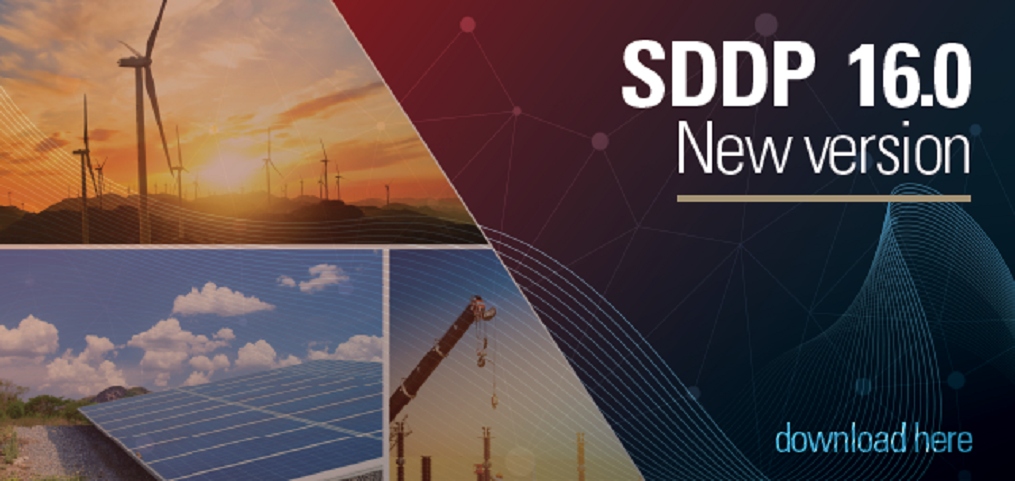PSR announces new SDDP 16 with new features for detailed renewable plants modelling and hourly dispatch

New features leverage flexibility analysis for all clients worldwide
On June 3rd, PSR released SDDP version 16, its stochastic scheduling optimization model. SDDP has been a global reference for almost thirty years and currently applied in more than seventy countries in the Americas, Europe, Asia-Pacific, and Africa, in systems with a wide variety of installed capacity (including some of the largest in the world, such as NordPool, Western USA, Canada, and Brazil) and levels of market designs/economic development (for example, Scandinavia and New Zealand; Latin America and East Asia; and countries in Africa).
Luiz Carlos da Costa, SDDP development manager, comments that the main feature in this version are related to the detailed modeling of wind and solar, a topic of great interest worldwide: “the first feature is the incorporation of the Time Series Lab (TSL), a new PSR tool that produces hourly stochastic generation scenarios for these sources. The first challenge for the production of these scenarios is the absence of consolidated historical records for renewables, in opposition to the hydro reservoirs”. According to PSR’s engineer Alessandro Soares, TSL prepares a history of hourly power generation for each existing and candidate solar/wind farms based on information from global databases of (reconstituted) wind speed and solar radiation records for each point on the planet: “This information is refined with wind/solar data measured from neighboring sites, and transformed into power generation using the technical parameters of the turbines, panels, etc. of each site”. The second challenge is the stochastic modeling of these renewables, which is much more complex than the hydro inflow ones. This modeling, based on Bayesian networks, was developed by PSR, as explained by the engineer Júlio Alberto Dias: “it allows the production of integrated scenarios of hourly wind and solar generation representing the spatial correlations of these sources with each other and with the weekly/monthly hydro inflows.”
The second feature is the greater detailing of the hourly representation in the probabilistic simulations such as the modeling of water travel times, ramp-up and ramp-down constraints for hydro plants, and fuel contracts and reservoirs. According to PSR’s engineer André Dias, who coordinated these developments, “the new detailed features, added to several others already available in the previous version of the SDDP, proved to be essential to capture the behavior of hourly prices.”
This version also has other features such as the representation of emission quotas by pollutant, fuel price scenarios, flexibility of Take-or-Pay contracts with make-up and carry forward clauses, hourly granularity for representing demand with price response . The full list can be found here.
The SDDP model is used by investors, traders, consultants, government agencies and operators to simulate complex energy systems, with horizons ranging from days to decades, hourly resolution, optimization of storage in multiple time scales (hydroelectric reservoirs, reversible plants, batteries, etc.), stochastic modeling of hydro inflows, wind, solar and demand, and detailed representation of thermal plants (unit commitment, ramp constraints, etc.) and the transmission network. In 2019, SDDP was executed more than 50,000 times.
One of the reasons for PSR’s leadership for so many years is its continuous investment in research, innovation, and the implementation of advanced methodologies. Several algorithms developed by the team since the original SDDP (stochastic dual dynamic programming) were adopted by the electrical industry, and total more than 8,000 citations in the scientific literature.

